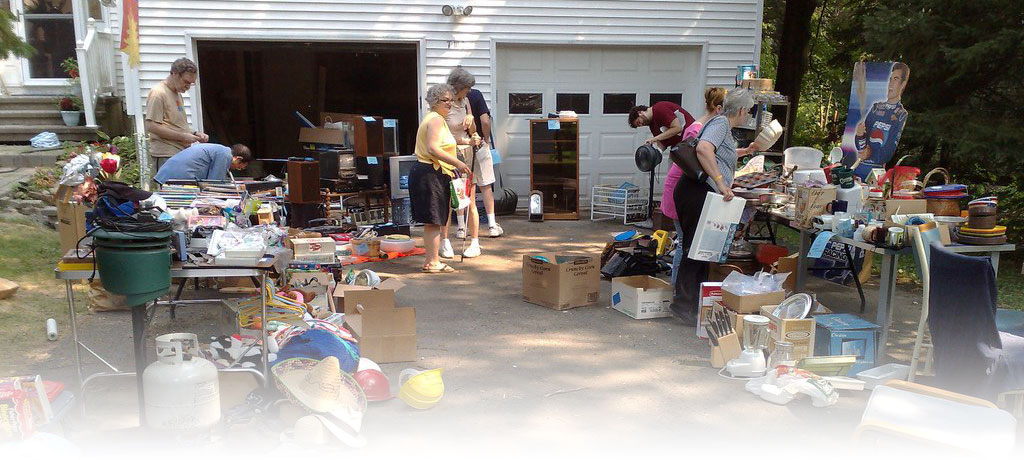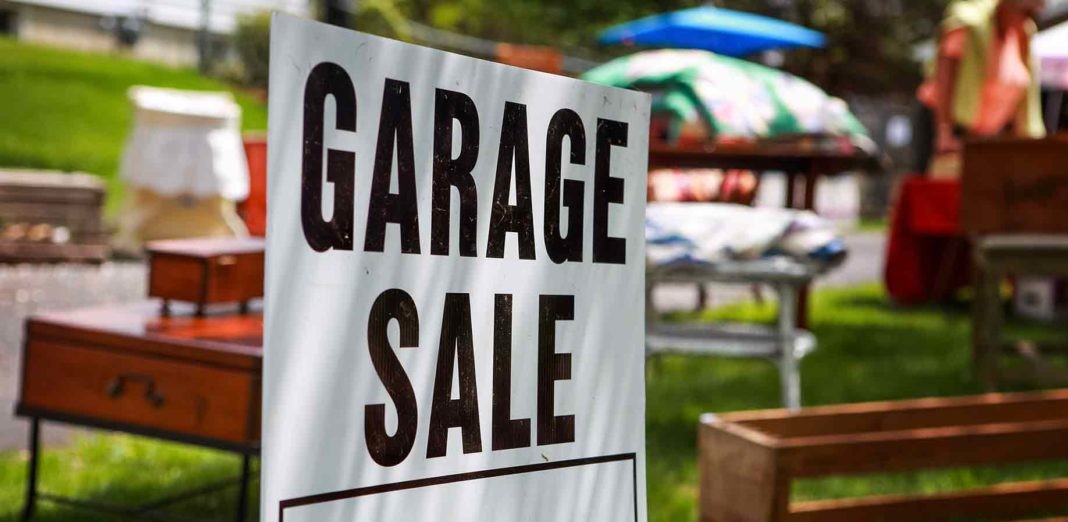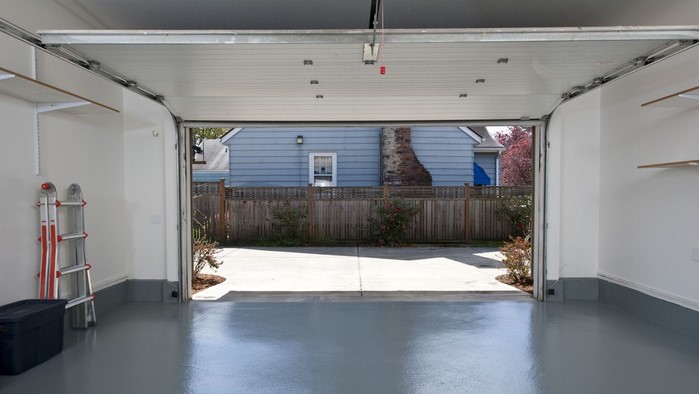So, you’re selling your house and need to declutter. Clear out the old, the unwanted and the unused. There’s an incentive to clearing. Creating more space in your place may have a positive effect on your peace of mind, as well as move you along the home selling process. A fun way to deal with the stuff you don’t need is to sell it all at a yard sale. Make extra cash, ask a few neighbors to join you for a block sale, and get rid of the things that haven’t been serving you for years!
Doesn’t that sound great?!

Here are tried and true Top 10 Tips for your best Garage Sale EVER!!
1. Six or more weeks before the sale choose the date for your sale. Weekends, of course, are best. With good planning, a 3-day weekend is fine for a 1-day sale because people have more time for chores, shopping, and playing.
2. Schedule an entire day to clear your garage before the date of the sale since you will want to be ready bright and early in the morning of your sale. Throw away the obvious trash. Add colorful post-it notes to the sale items, and different color post-it notes to items that you plan to give away or keep.
3. Stage an area in your home or garage where all your “for sale” items can sit until the sale. Take a few pictures of some of your sale items.
4. De-clutter for the sale: Go through all the spaces in your home, office, garage, closets and drawers. Everywhere. Carry a box or bag with you as you go through each area and fill it with that which you no longer use, want, or desire. Be ruthless. And try to not let guilt guide your decisions about letting go! Now put all the stuff in the staging area.
5. Pre-sale advertising on Craigslist and NextDoor.com: This is the key to having the best garage sale EVER! Each week for four weeks prior to the sale, post an ad about your sale on craigslist. The weekly ads should include the same important information: title of ad, city/community of yard sale, dates/times of yard sale, but the body of the ad should change each week. Your ad should excite, delight, and attract potential customers! Show pictures of some of the sale items. Comments may include, EVERYTHING MUST GO! MORE ITEMS IN NEXT WEEK’S AD! Each week post different stuff with different but similar comments. The goal is to build a “following” so people look for your ad next week. Do not include your address until your final post a week before the ad. Very early on the morning of the sale, post ad #4 a second time (for a total of 5 posts).

6. Signage (part 1): Signs should be clear, simple, and readable. Cut a poster-board in half. That’s about the size you should make the signs. Use block letters, printed with date/time of sale, address of sale. Each sign should have a space to draw a directional arrow. Plan to start the sale in the morning because people are more likely to show up to your door before 7am!
7. Signage (part 2): Before you hang your signs, spend a few days driving around your neighborhood for all the ways to get to your house and likely places to hang the signs. If your sale is on a Saturday, post the signs on Wednesday evening. When you go out to hang signs, bring these with you: thick-tip Sharpie marker, heavy duty tape, hammer and a few nails. Add a directional arrow to each sign just before hanging. IMPORTANT:
REMOVE YOUR SIGNS THE DAY AFTER THE SALE (or better, THAT NIGHT!!!) Do not clutter your neighborhood with your old yard sale signs.
8. Day before the sale: Take everything from the staging area inside the house to the garage or area where you plan to hold the sale. Get the items into boxes and bags and close to the front door. Wipe down dirty or dusty items. Have a bunch of paper or plastic grocery bags to help cart away the purchases. Also, have a change purse with several $1s, $5s, a couple of $10s, and coins. Get a good night’s sleep.

9. Day of sale: Get up and out EARLY! People will be waiting when you get outside. Feel free to politely ask them to return at the designated time or… start selling! Put a tall/large item near the curb to attract people driving by your house.
10. To price or not to price an item: If the point of your sale is to get rid of your old stuff, don’t add a price tag on anything. When a customer asks about the cost, ask what they want to pay and take their money! Or name a price, and banter back and forth with the customer until you come to an agreement. If you’ve got a big-ticket item such as a treadmill, couch, or dining set, go ahead a name a price and guage a customer’s reaction. Bottom line: sometimes when an item has a price tag, it may discourage the customer from asking for a lower price. I’ve done at least 25 yard sales (personally and professionally). I’ve never tagged a single item and always had a great sale.
I wish you amazing success with your sale. Put what you’ve earned in the bank, or take yourself and a friend out to dinner! But please don’t go shopping!



 attractive it will be to customers, and therefore earn more money. If the estimated increase in the customer base or sales is higher than the expenses incurred when renting an office space, relocating might actually help your business to grow.
attractive it will be to customers, and therefore earn more money. If the estimated increase in the customer base or sales is higher than the expenses incurred when renting an office space, relocating might actually help your business to grow.
 How do you handle these items?
How do you handle these items? should ask yourself, “Do I really need to take everything with me?” Most of the time the answer is no. A great way to de-clutter and only take the items you need is by hiring someone to help you. A professional de-clutter expert can come in and help you weed out those unused items. You can then give them to a charity of your choice and get a nice tax deduction.
should ask yourself, “Do I really need to take everything with me?” Most of the time the answer is no. A great way to de-clutter and only take the items you need is by hiring someone to help you. A professional de-clutter expert can come in and help you weed out those unused items. You can then give them to a charity of your choice and get a nice tax deduction.